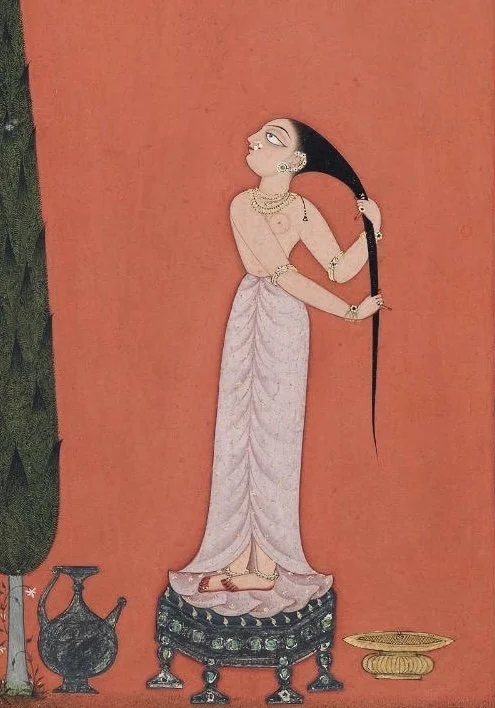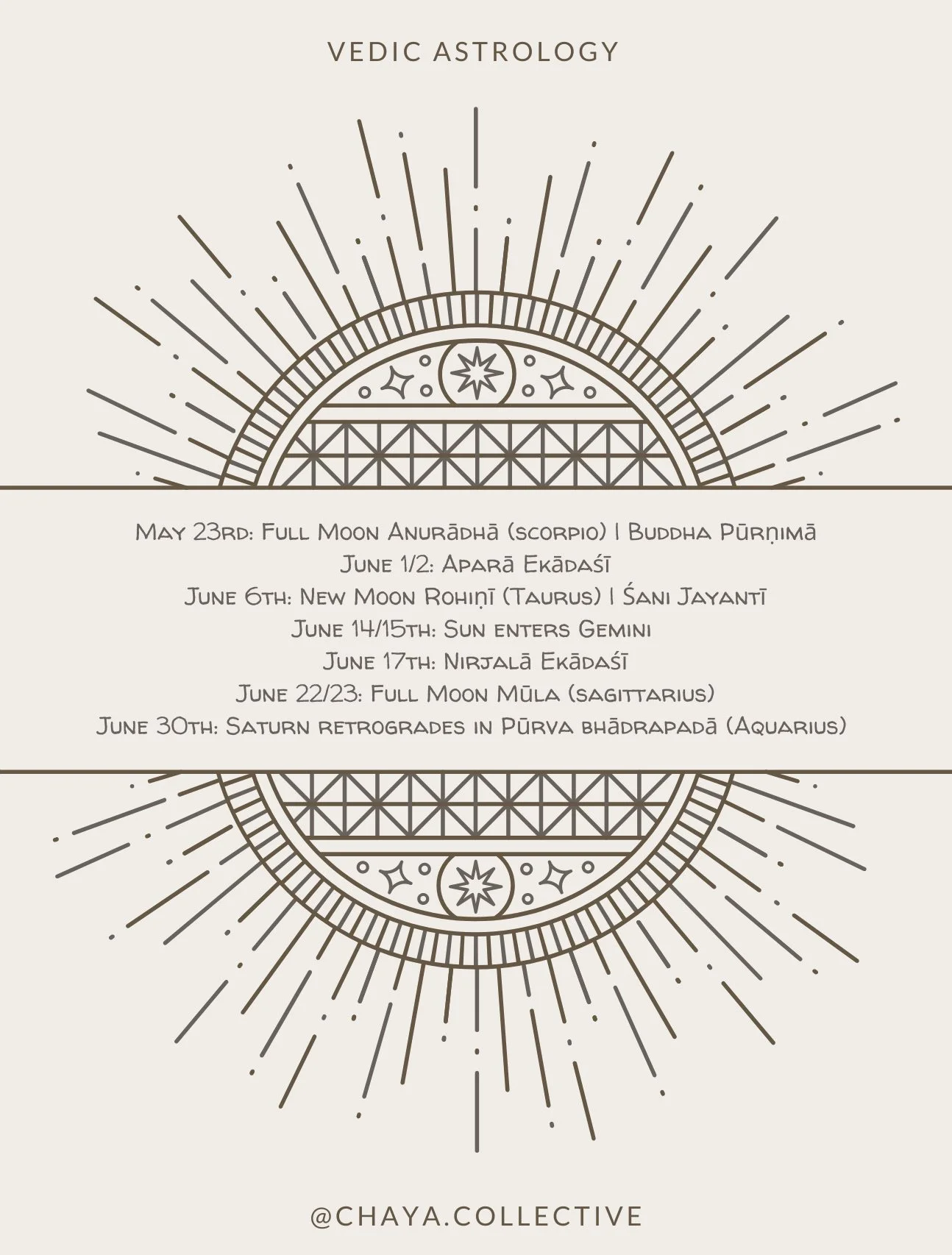Gaṇeśa Caturthī
गणेश चतुर्थी
Artwork: Basohli miniature, c. 1730. National Museum, New Delhi
Beginning on the fourth day (caturthī) of the bright fortnight (shukla pakṣa) in the month of Bhadrapadā (Aug-Sept), Gaṇeśa Caturthī is a festival that lasts for ten days, September 6/7 through Anant Caturdaśī (fourteenth day).
Salutations to Śrī Gaṇeśa who has a curved trunk, who has a large body and whose splendor is similar to that of a million suns; who is the son of Śiva and Pārvatī, the remover of obstacles and the writer of the story.⠀⠀⠀⠀⠀⠀⠀⠀
O Deva, lord of new beginnings, please make my undertakings free of obstacles, by extending your blessings in all my works, always and may I remember to trust that when you place obstacles in my way, that you’re gently guiding me back to my most aligned path.
As the lunar cycles shift towards the waxing moon, the energy of Gaṇeśa Caturthī invites us to reflect on the celestial rhythms that mirror our inner journey. Gaṇeśa, revered as the deity who governs the threshold of beginnings, wisdom, and intelligence, represented by the brain stem in our physiology, the lord connected to Jyotiṣa (Vedic astrology) and the one who is associated with Ketu and Mercury. He rules over the planetary vibrations that guide us through transitions—encouraging us to see obstacles not as hindrances, but as divine redirections towards our true purpose.
On this sacred day, devotees immerse themselves in fasting, chanting Vedic hymns and Hindu texts, offering sweets such as modak—believed to be the favorite of Lord Gaṇeśa—as prasada. The festival culminates on the tenth day with visarjana, when the Murti (depiction of a deity) is carried in a grand procession, accompanied by music and chanting, and immersed in a nearby body of water, symbolizing the cycle of creation and dissolution.
May this sacred festival remind us to surrender to the dance of the cosmos, trusting in the wisdom of Gaṇeśa to illuminate the path toward our highest purpose.
ॐ श्री गणेशाय नमः
































